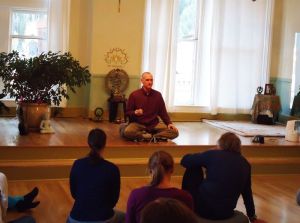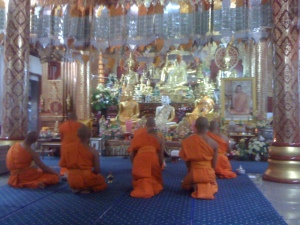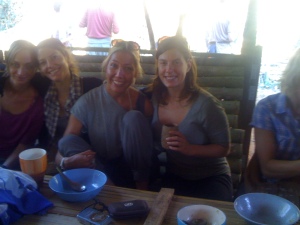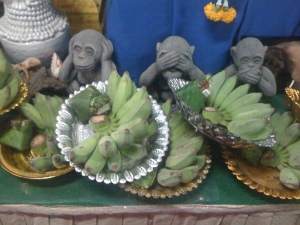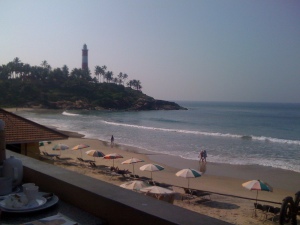“This is happiness – to be dissolved into something complete and great.”
– Willa Cather
If you would have asked me the question, “Would you participate in a Shamanic healing journey (read: LSD trip) in Cambodia?”, I would have replied, “Hell no.” Especially as this particular journey was not being conducted by an old Shamanic healer from generations of prior Shamanic healers deep in the jungle, but by a skinny white guy my own age from the suburbs of Philadelphia.
I am not big on drugs, or drinking, for that matter. Living in a hard-partying ski town, this often does not win me any popularity contests. But yoga teaches that drinking and other substances (I won’t speak about hash chillums that seem to be the life blood of Indian babas) blocks our true awareness. True consciousness is the whole point of this 6-month pilgrimage, and of yoga and meditation – practices to get close to the Divine One-ness or consciousness that pervades all things. Which, as far as I can tell, equates to Pure Love; call it Happiness or Peace. Those kinds of words.
LSD is something I took in high school with Drew Beard and John Cassidy, sitting in their apartment by the Highland railroad tracks in Memphis, Tennessee, watching Pink Floyd The Wall and getting super freaked out by the big rat, mostly to make my dad mad.
When it was announced that a Shamanic journey would commence at the retreat center where I teach yoga and meditation, I decided I was out. Not just out, but out. Literally, I was packing my bags and telling my friend Brian when to meet me at the bus station in Phnom Pen. This was the last straw in a long line of last straws. Cambodia, and the retreat center, were pushing every last button, showing me new buttons I didn’t know I had, and then pushing those too.
At the ancient temples of Angkor Wat, I’d been assaulted on all sides by Korean tourists yelling and jumping up in the air for action shots in front of crumbling ancient walls. I wanted to find some peace, the purpose for their painstaking construction. Finding a quiet, deserted space, I sat down in front of a giant Buddha, and immediately jumped back up, having sat on a bee. At which point a puppy growled viciously and tried to bite me.
There is noise here, all the time – either from thumping trance music played in bamboo huts at ear-splitting decibels, or from Aharon, one of the gardening boys, who is obsessed with beating the box drum, an instrument I never knew existed but now fantasize about breaking over his head. Cambodia is full of bugs (I don’t remember when my skin wasn’t crawling with them); there are rats (the real kind, not safe behind a TV screen).
Anyway, Cambodia has not given much relief, and my desire to stay has been tested, truly, every day.
(At this point, I should also mention that Cambodia is colorful beyond Western imagining, that its sky is huge and dramatic; that its babies are possibly the cutest anywhere; and its people in general so happy and content with so little that it could also be one of the best places to be in the world (minus landmines and a very recent genocide) if it is not trying to teach you lessons that in the long run will make you a more peaceful and generally decent human being.)
But an acid trip was dumb, I thought, and no one knew anything about how it would work. Most of the guests were not participating, and I pictured it being a bunch of retreat center volunteers swaying around to more trance music.
As a dutiful employee (until the next day when I would be on a bus), I sat in a circle out in the yoga pavilion, along with all the guests and volunteers. Joel spoke to us in detail about the purpose of the journey, and what this pure form of LSD really was – some kind of naturally-ocurring mold on top of rye? I have since been informed that it goes through a chemical process- don’t tell me if this happens to be true.
Sitting there, so frustrated and annoyed, some of his words got through. “For generations, native cultures have used certain medicines for physical healing, and others for emotional and spiritual healing,” he was saying. Huh? My ears perked up. I didn’t hear much else.
“Everyone, whether they are taking the medicine or not, is a part of this process,” he said. He gave us crayons and paper to write our goals or just draw pictures.
I began to write about breaking free of fear and being more present, of letting go of control and judgment in favor of freedom. He came around with a small glass jam jar. “You want some?” he asked. “Maybe just 2/3rds of a dose to start with?”
I nodded, and his eyes widened but he just poured something clear from a Visine bottle, mixed it with filtered water, and waited quietly while I drank. I put my palms together and bowed my head slightly. He did the same and went on to the next person.
15 minutes later, I sat next to a pile of cow shit, behind some dusty trees in the field out back, crying quietly, staring at the sky. I don’t know how long I cried, but it felt like I had always been and would always be, crying. In the distance were the sounds of the other journey-takers shouting and laughing.
Next, maybe minutes or hours later, I heard popping noises, and immediately decided the neighbors were shooting their pigs. As soon as there is a popping noise, I assume animals are being slaughtered, ever since the Thai hill village. It’s probably good to mention that this is rarely the case.
In this case, it was a rolling, running, laughing jumping group of small boys, throwing firecrackers and laughing. They were sneaking closer and closer, daring each other to approach the Barang (white person) by a few more steps. I smiled at them them from a red, wet face and they laughed and waved. Soon after that, Joel appeared and said a few words in Khmer, and they retreated, but not before throwing a brave last round only a few feet away.
It exploded and we laughed. They might have regrouped and come closer but by then Hugo and Ita, two of the gardening boys, had come into the field.
Then the most beautiful thing – this same little rolling hill of boys surged toward Hugo and Ita across the dry, desolate field of desiccated rice paddies, throwing a tentative round or two of firecrackers in greeting.
Hugo or Ita sent a frisbee spiraling toward the boys. The boys were the color of the bare patches on the field, and they were a river of constant motion, surging forward, collecting itself, spilling and sloshing to the sides, and then regrouping into a powerful forward force. The boys gave up on the explosives and adopted the language of the more peaceful frisbee, pointing as Hugo and Ita leapt through the air and improvised dance moves. The river of boys collected momentum and joyfully mimicked the leaps and dancing.
This is where the Shamanic parts might get a little high-faluting, but I have to stay true to the story. It was as if the earth, so barren in this spot, was saying with its river, its poem of boys, Look; all my devastation is worth it. This tangle of mischief and abandon is my greatest beauty.
I stopped crying, or I kept crying but also laughed. The tears were never bad. They were just necessary, like air. Judgment didn’t play into it any more. Without judging myself, I could cry and sit in a dry field for hours or minutes, and it was nothing but necessary.
Without judgment or expectation, it was as if everything I was doing, sitting in the dirt, watching the boys and the sky, feeling whatever I was feeling, had nothing attached to it. It was then that I realized how you can be rich without money, without even beauty. Because if you are still within yourself, there is nothing to be added to that stillness.
At some point Pia, the resident healer, put her arm around me and we made our way to the top of a huge displaced mound of dirt that had made way for a meditation pool under construction. We did sit here for hours; I know because eventually the full moon came out above the jackfruit tree. I sat in meditative asana, facing away from the moon because it was so bright, running my hands over the earth. Eventually, I was rolling in the earth, sliding my limbs across it and there was nothing I wanted so much as to feel part of it, that solid and also pliable.
“Look at the moon!” Pia said. I told her it was too bright. “That’s your power; are you afraid of your power?” she asked in her Norwegian accent, so ethereal and fairytale-like. I didn’t know. Probably. But I turned and looked up. The moon was full, and white and its seas were so clear, deep and luminous. I felt a zzz-ing between my eyebrows and I couldn’t stop looking. Its pull, the same attraction drawing the tides, had me and wouldn’t release its grip.
Even when Pia wandered off in search of a coconut, and the gardening boys, one by one, climbed the mountain of earth attempting jokes and flirting, I couldn’t stop staring at the moon. It was the deepest and most profound conversation.
The boys and Pia took seats around the mountain of earth and they started a fire. For a while we had conversations that overlapped and then didn’t, and long periods of silence.
Then I put on my friend Brian’s Sanskrit chants playlist and climbed the steps up to the treehouse platform, where I swayed in the wind along with the tree and stared at the moon as occasional lightning lit the whole sky.
Between me and the moon, there was an understanding, at this point. We were fierce. We were elemental. We held secrets and we transmitted. That was our job – the moon and me – to reflect the light of a larger and more infinitely substantive light. Therin lay our power.
I climbed down from the treehouse, disconnected the music in the early morning. I unplugged all the power sources to save electricity. I tidied the jumbles of cushions and papers scattered around the yoga hut. I showered, and even shaved my legs. I put on pajamas and lay down under a blanket, and fell asleep.
I woke up wondering if I was now a drug addict, because the night had been what I imagined the yogis sit in caves to experience – the goal of all the asana and sitting and everything.
When I asked Joel, he said, as he usually does. There isn’t a goal. You are closer to what you want right now than anytime in the future.
I don’t always let him get away with this sort of observation. While true, it can be frustrating. What I want is more. Present moment awareness on a tiny microscopic level while being aware of grandness and scale at the same time. Just like during the Shamanic journey, when I was so minutely aware of a mosquito I killed with my palm, and also of immense divine power at work in the world.
“You have to strengthen your endocrine system to have that kind of awareness in daily life,” Joel said. “With asana, pranayama breathing, kriya techniques…”
So, while there isn’t a goal, there still kind of is one. And also not.
That’s as clear as I can be. In the beginning, it was so much easier to tie lessons up into neat packages! But that’s not usually how truth works. And it is.

